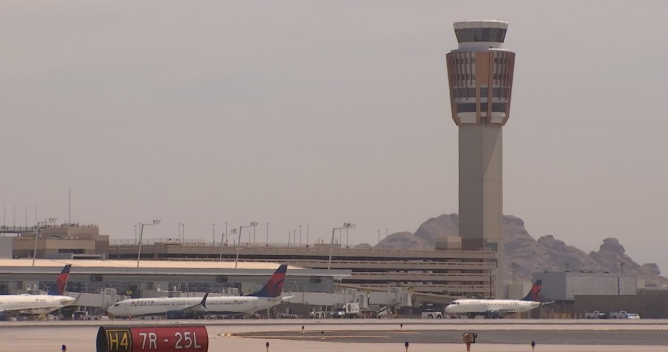Sky Harbor Airport nears approval for $5.7B in improvements
Arizona – Phoenix Sky Harbor International Airport is one step closer to getting some much-needed improvements. On June 11, the Phoenix City Council approved the airport’s Comprehensive Asset Management Plan (CAMP), estimated at $5.7 billion over the next 20 years. The plan calls for improvements to the airport’s terminals, roadways, and support facilities.
The next step is to get approval from the Federal Aviation Administration. The plan addresses concerns about future demand. It’s projected that in 20 years, the airport will serve 80 million passengers annually and double its current amount of cargo.

Phoenix Sky Harbor International Airport
Major projects during the first five years are estimated to cost $1 billion, including $441 million to “trench” the existing railroad tracks on the north side. Other key developments aim to improve and add concourses, redesign Sky Harbor Boulevard, and construct service roads and facilities.
About $1.2 billion in Sky Harbor Airport projects is scheduled for the second phase of the plan in years five through 10 that would fund construction of a new west terminal concourse, a north cargo area and facilities infrastructure, and a post-security passenger connector to link terminals 3 and 4. It also includes a redesign for improved connectivity, capacity, and security. A cross-field taxiway would be built as well.
Phase 3 in years 10 to 20 is estimated to cost $1.7 billion to complete the west terminal’s south-side concourses, roads, and processing facilities, expand cargo capacity, and construct another taxiway. The final phase would cost $1.8 billion to erect concourses at the west terminal, construct a service-road tunnel, and remodel Terminal 4’s international concourse.
Each phase of the plan will begin as need arises. All phases will require approval from the Phoenix City Council. All projects will be funded by airport revenues, facility charges, and state and federal grants.

 512-531-3900
512-531-3900 Request More Info
Request More Info